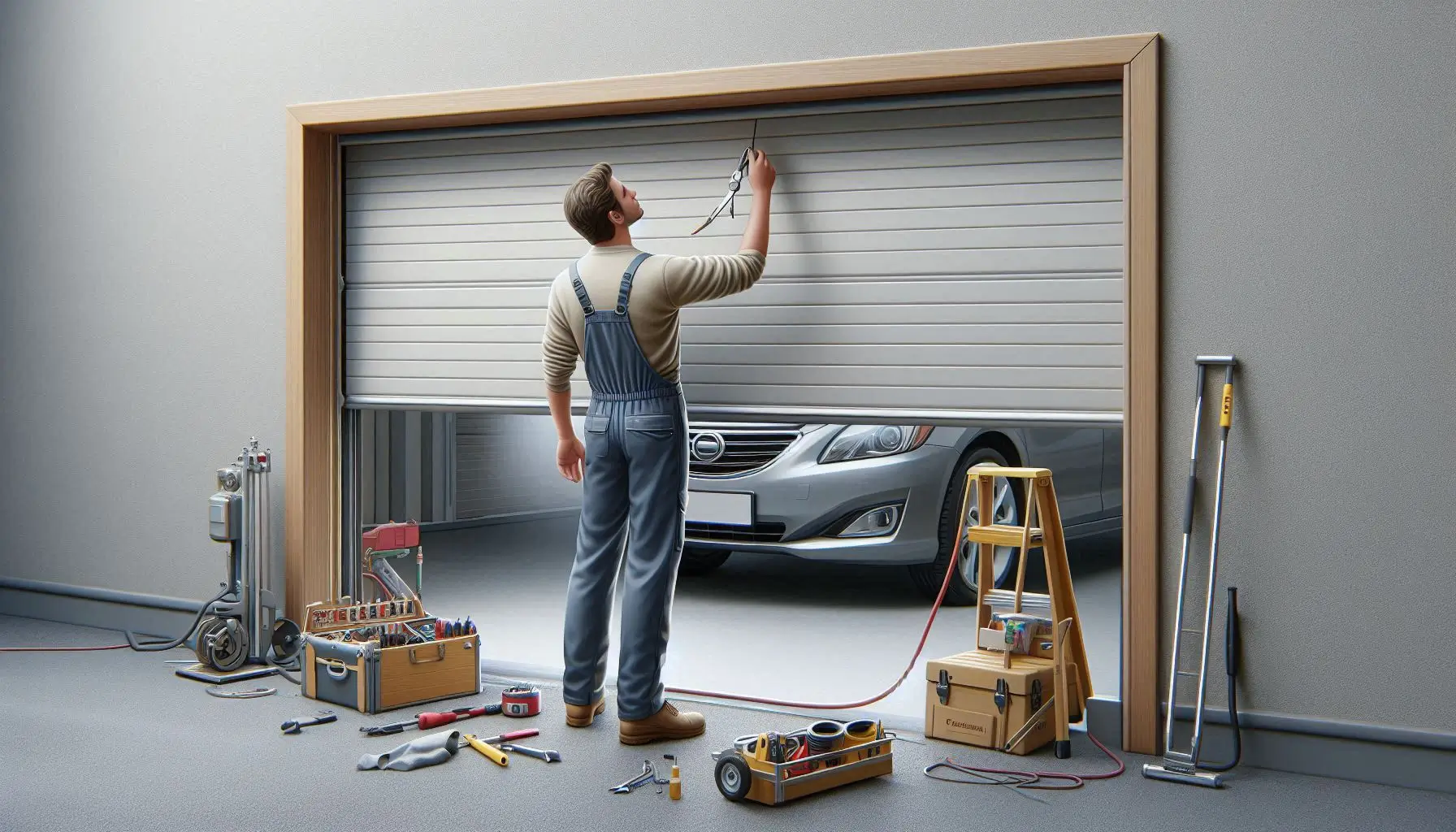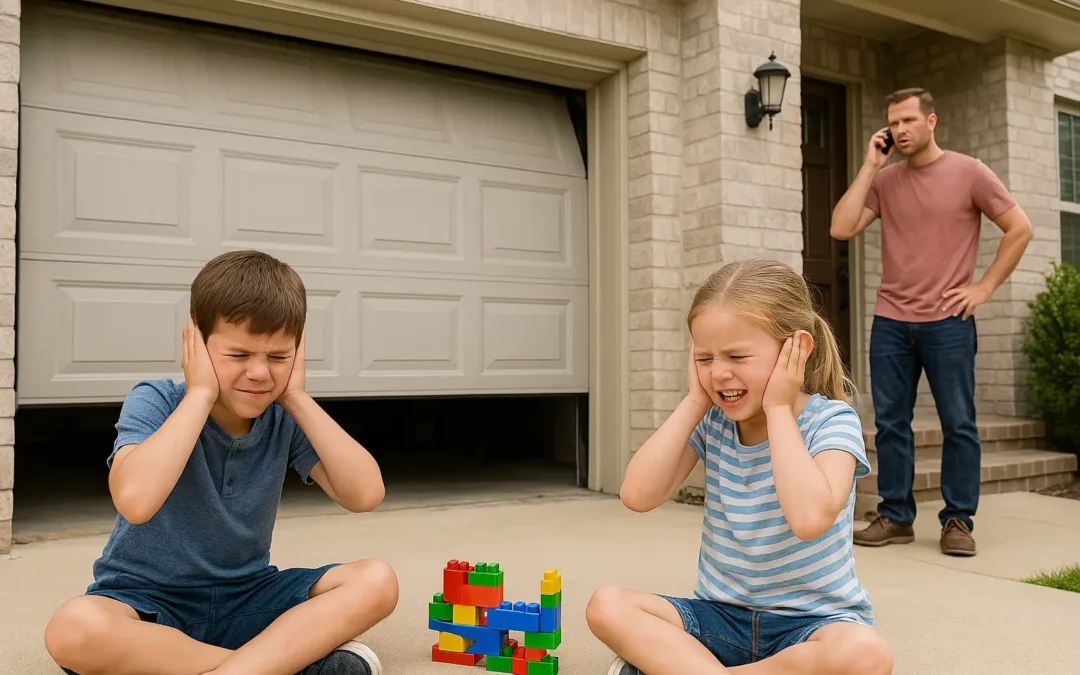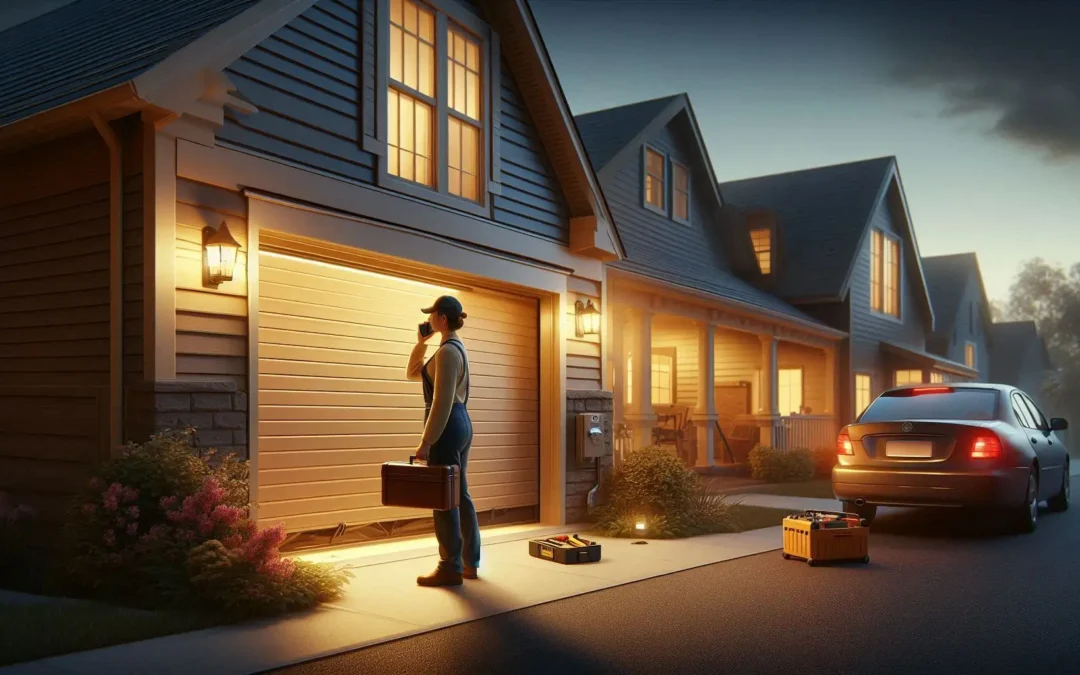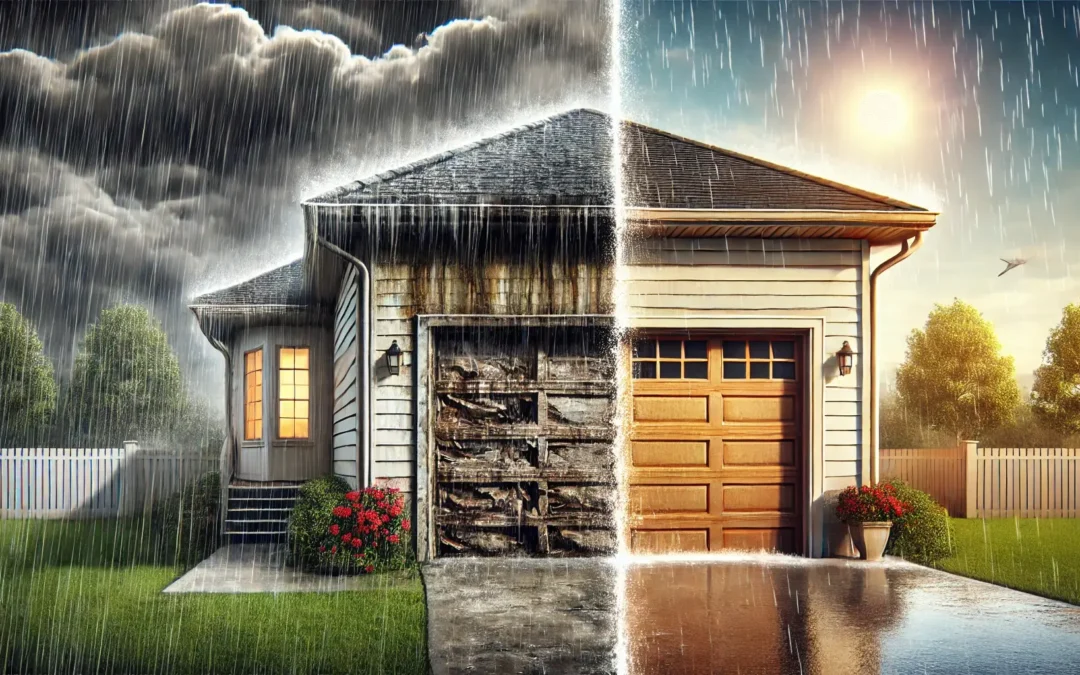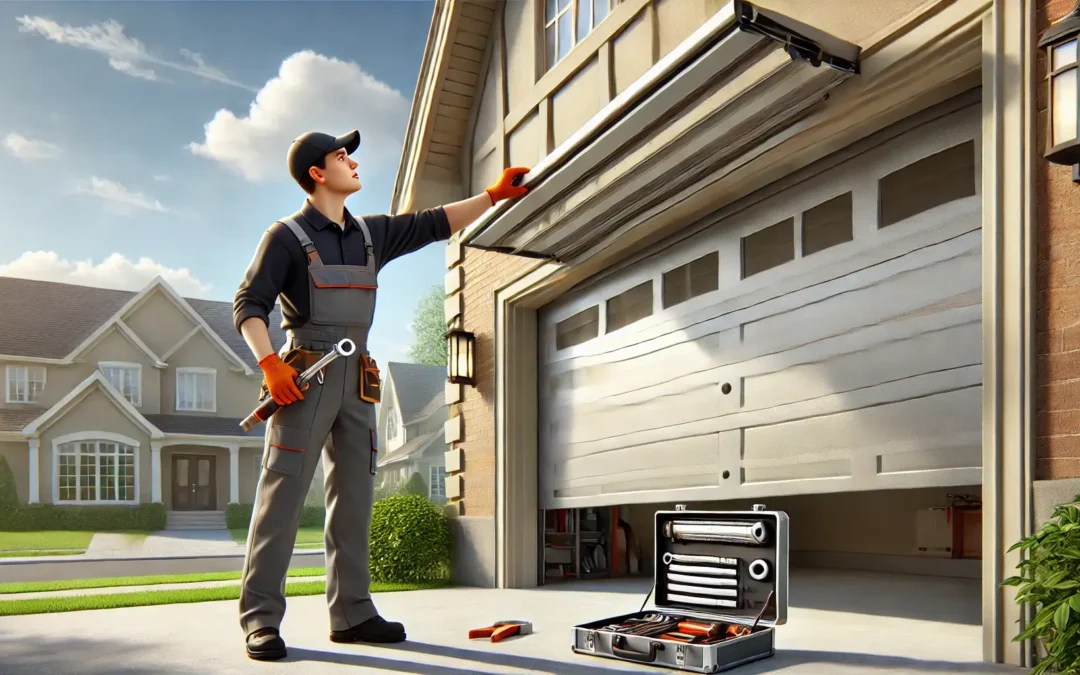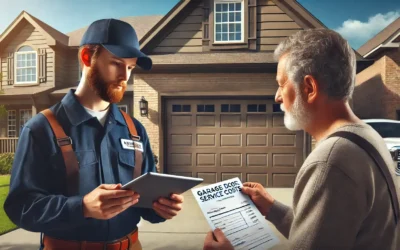The differences between preventive and corrective maintenance in automatic garage doors are fundamental for any building owner or manager who wants to keep these installations in optimal condition. While preventive maintenance focuses on avoiding problems before they occur, corrective maintenance deals with repairing existing faults. Understanding these differences not only helps ensure the proper functioning and safety of automatic garage doors but can also mean significant savings in costs and time in the long run.
What is Preventive Maintenance in Automatic Garage Doors?
Preventive maintenance refers to the regular actions taken to prevent automatic garage doors from experiencing faults or breakdowns. This type of maintenance focuses on the routine inspection and care of components to detect and address minor issues before they become major faults.
Common Tasks in Preventive Maintenance
The most common tasks in preventive maintenance include:
- Regular inspections: Checking the condition of door components such as motors, rails, and sensors.
- Minor adjustments: Making small corrections to ensure the door functions properly.
- Lubrication of moving parts: Applying appropriate lubricants to components that need it to reduce wear and prevent malfunction.
- Cleaning of sensors and mechanisms: Keeping sensors and other components free of dust and debris to ensure proper functioning.
Benefits of Preventive Maintenance in Automatic Garage Doors
Preventive maintenance offers several important benefits:
- Reduction of breakdowns and faults: By identifying and solving minor problems, major and more costly faults can be prevented.
- Increased safety: Regular inspections ensure that safety mechanisms are working correctly, protecting users.
- Cost savings in the long term: Addressing small issues preventively is more economical than dealing with severe breakdowns.
- Extended lifespan: Keeping the door in good condition helps extend its lifespan and delay the need for costly replacements.
Practical Examples of Preventive Maintenance
Some examples of preventive maintenance tasks include:
- Checking door alignment: Ensuring that doors are properly aligned for smooth and unobstructed operation.
- Inspecting safety sensors: Verifying that sensors are functioning correctly to prevent accidents and ensure user safety.
- Inspecting motors and control systems: Ensuring that motors and control systems are in good condition to prevent unexpected failures.
- Cleaning rails and sliding mechanisms: Keeping rails free of dust and debris for smooth and uninterrupted movement.
What is Corrective Maintenance in Automatic Garage Doors?
Corrective maintenance, on the other hand, is performed after a fault has occurred in automatic garage doors. This type of maintenance focuses on repairing and replacing damaged components to restore the normal functioning of the door.
Common Tasks in Corrective Maintenance
The most common tasks in corrective maintenance include:
- Repairing damaged components: Fixing parts that have failed or are damaged, such as motors, circuits, or sensors.
- Replacing irreparable parts: Substituting components that cannot be repaired and are essential for the door’s operation.
- Major adjustments: Making significant corrections to restore the door’s operation, such as realigning components or updating control software.
Benefits of Corrective Maintenance in Automatic Garage Doors
Although it may seem that corrective maintenance is only performed when absolutely necessary, it also has its benefits:
- Resolution of major issues: Addresses and resolves significant faults that prevent the door from functioning.
- Updating obsolete components: Opportunity to replace outdated or worn parts with newer and more efficient versions.
- Restoration of safety: Ensures that the door’s safety functions are operational after a fault.
Practical Examples of Corrective Maintenance
Some examples of corrective maintenance tasks include:
- Replacing a burnt-out motor: Replacing motors that have stopped working to restore the door’s operability.
- Repairing a faulty control panel: Fixing issues in the control system that affect the door’s functionality.
- Replacing broken sensors: Substituting damaged sensors to ensure accurate detection and prevent accidents.
- Adjusting closing mechanisms after a fault: Making necessary adjustments to ensure correct and safe door closure.
Comparison Between Preventive and Corrective Maintenance in Automatic Garage Doors
The comparison between preventive and corrective maintenance reveals key differences in their objectives, frequency, costs, and impact on the operation of automatic garage doors. These differences are crucial for determining the most appropriate type of maintenance based on specific needs.
Objectives of Each Type of Maintenance
- Preventive Maintenance: The main goal is to avoid faults before they occur. This is achieved through regular inspections and minor adjustments that keep the door in good condition and prevent future problems.
- Corrective Maintenance: Its goal is to repair faults that have already occurred. This type of maintenance focuses on repairing and replacing damaged components to restore normal door operation.
Frequency of Maintenance
- Preventive Maintenance: Performed regularly, following a pre-established schedule. Inspections and minor adjustments are carried out periodically to ensure the door functions correctly.
- Corrective Maintenance: Performed as needed, i.e., when a fault or failure occurs in the door. It does not follow a fixed schedule but is carried out in response to specific issues.
Costs Associated with Each Type of Maintenance
- Preventive Maintenance: Generally involves lower long-term costs. By preventing major and more expensive faults, this type of maintenance can be more economical. However, it requires ongoing investment in inspections and adjustments.
- Corrective Maintenance: Can be more costly due to the significant nature of necessary repairs. Major faults may require replacing expensive components and, in some cases, interrupting operations to carry out repairs.
Impact on the Operation
- Preventive Maintenance: Minimizes downtime. By performing regular inspections and minor adjustments, problems can be prevented before they cause interruptions in door operation.
- Corrective Maintenance: May require interrupting operations to carry out repairs. Major faults can stop door operation until issues are resolved.
The Importance of an Adequate Maintenance Plan
Having an adequate maintenance plan that combines both preventive and corrective maintenance is crucial for ensuring the safe and efficient operation of automatic garage doors. This plan should include several key elements:
Combining Preventive and Corrective Maintenance
An effective plan should combine both types of maintenance to maximize efficiency and minimize risks. Preventive maintenance helps avoid faults, while corrective maintenance ensures that any issues that arise are effectively addressed.
Regular Inspection Schedule
Scheduling periodic reviews is essential for identifying potential issues before they become major faults. This schedule should be strictly followed to ensure all parts of the door are adequately inspected and maintained.
Detailed Maintenance Record
Keeping a detailed record of all maintenance activities is essential. This record helps identify fault patterns, plan future inspections, and maintain a history of maintenance that can be useful in case of recurring issues.
Emergency Procedures
Defining actions to take in case of a fault is crucial for minimizing downtime and ensuring user safety. These procedures should be clear and known to all personnel involved in the maintenance of automatic garage doors.
Risk Assessment
Identifying and mitigating risks associated with the use of automatic garage doors is an important part of any maintenance plan. This includes assessing potential risks and taking measures to prevent accidents or faults.
Conclusion
In summary, both preventive and corrective maintenance are essential for the proper functioning and safety of automatic garage doors. Preventive maintenance helps avoid problems before they occur, while corrective maintenance focuses on repairing existing faults. An adequate maintenance plan that combines both approaches can save costs in the long term, increase safety, and extend the lifespan of automatic garage doors.
Frequently Asked Questions
- What should I do if my automatic door frequently gets stuck?
If your automatic door frequently gets stuck, the first thing to do is visually inspect the rails and sliding mechanisms to ensure there are no obstructions. Also, check if the sensors are clean and functioning correctly. If the problem persists, it is advisable to contact a professional for a more detailed inspection and possible repair. - What type of warranty does TAC Overhead Door offer on its maintenance services?
TAC Overhead Door offers a warranty that covers both labor and components used in repairs. The duration and specific terms of the warranty may vary depending on the type of service and components replaced but generally includes sufficient coverage to ensure customer satisfaction and continued functionality of the automatic garage doors. - Are there differences in maintaining automatic garage doors from different manufacturers?
Yes, there are differences in maintaining automatic garage doors depending on the manufacturer. Each manufacturer may use different components and systems, which may require specific maintenance procedures. It is important to follow the manufacturer’s recommendations and have technicians trained in the particularities of each type of door. - How can I tell if my automatic door is at risk of failing?
You can tell if your automatic door is at risk of failing by paying attention to signs such as unusual noises, erratic movements, delays in opening or closing, and sensors not functioning correctly. If you notice any of these symptoms, it is important to conduct a detailed inspection and consider preventive maintenance to avoid major faults. - Is preventive maintenance necessary if the automatic door seems to be working well?
Yes, preventive maintenance is necessary even if the automatic door seems to be working well. Preventive maintenance helps identify and address minor issues before they become serious breakdowns, ensuring continuous operation and avoiding higher costs associated with major repairs.
Final Summary
Implementing a maintenance plan that combines both preventive and corrective maintenance is essential for ensuring the efficient and safe operation of automatic garage doors. This comprehensive approach not only helps extend the life of the doors but also ensures user safety and reduces long-term costs. Contact Us.

